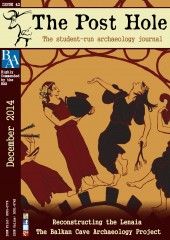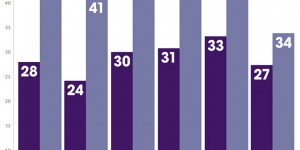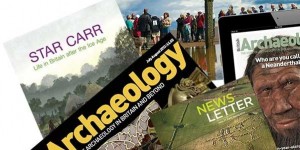There is a clear separation of the different stages of the archaeological work conducted in the field. Questioning these reasons and the necessity of those reasons can only be addressed by looking in detail at what all these different stages do in practice and assessing the justifications, if any, to the separations from one to another.
This short essay aims to address the question of whether the separation of three different stages of archaeological work is needed, or if these stages are even viable. Firstly, the focus will be on an overview of archaeological fieldwork, then on several definitions and explanations of each stage to distinguish between them. Secondly, I will go on to discuss the advantages and disadvantages of the complete separation of these stages. Followed by alternative solutions to the problems faced as a result of this separation of stages during excavation, finally coming to a balanced and considered conclusion on the topic.
Overview
Field archaeology has developed exponentially over many years for different reasons, resulting in the appearance of the alleged division. The initial ideology of field archaeology classified four different types of archaeologists, each one having a different technique, aim and agenda;
The rescue archaeologist: the practitioner that gathers all the data that they can salvage, hoping that archaeologists in the future might be able to understand what they did not have time to look at (Roskams 2011). This is basically excavation as the only means of investigation; no preliminary work is undertaken as time is short and artefacts are in danger of being destroyed therefore, a comprehensive excavation method is required.
The next type is a second type of rescuer, those who destroy the more recent layers of archaeology to get to the one that is more important to them (Roskams 2011). This is the pure type of full excavation, destroying all that they do not need and therefore future generations will not have the chance of studying the lost history. In practice this contradicts the reason of archaeological study, as it destroys evidence, and therefore heritage, that should have been kept and preserved by the archaeologist in question (Hamilakis et al. 2010).
The third type of archaeologist is the researcher, who records every detail by the letter to the point that each layer might need four generations to be documented fully (Roskams 2011).The advantages and disadvantages of such a method may be apparent in that it is detailed, but extremely slow and it does not rapidly consider the big picture. Layers may be interconnected and full excavation report could be needed for a complete understanding.
The last type of archaeologist is the selfish researcher, who ignores what is not their field and chooses to study topics or artefacts which could gain them money and fame, in turn destroying whatever is not of their specific interests (Roskams 2011). This method has more detailed analysis than the rescuer, but it has a deliberate disregard for any area that is not related to the researcher’s project.
Pioneering archaeologists like Pitt-Rivers, Wheeler and many others established the scientific approach to excavation through trial and error. Each utilised one or more of the above techniques (Johnson 2014), bringing the archaeological society towards adopting a set standard on which to base its research. With the aims to control the pace at which excavations took place and the level of destruction involved.
As archaeology developed, societies were formed in both the U.S. and the U.K. These institutions created set standards that archaeologists had to follow in order to inflict minimal damage on the archaeology, also making sure excavators were as informed as possible before undertaking a dig. The Society of Professional Archaeologists (SOPA) in the United States ruled, in its Standards of Research Performance:
“The research archaeologist has a responsibility to attempt to design and conduct projects that will add to our understanding of past cultures and/or that will develop better theories, methods, or techniques for interpreting the archaeological record, while causing minimal attrition of the archaeological resource base. In the conduct of a research project, the following minimum standards should be followed: The archaeologist has a responsibility to prepare adequately for any research project, whether or not in the field.” (Davis 1982).
Meaning archaeologists went through a reconnaissance and evaluation, requiring them to gather as much information as possible before any excavation started.
In the United Kingdom, on the other hand, Planning Policy Guidance 16 (PPG 16) was written with clear rules on how archaeologists should perform their work and to what standard. It stated that:
“- The historic environment is a fundamental aspect of the Government’s commitment to environmental stewardship
- Remains should be seen as finite and non- renewable resource
- Care must be taken to ensure that archaeological remains are not needlessly or thoughtlessly destroyed
- Preservation of archaeological and historic remains is therefore ‘a material consideration’ in the planning process” (Builder & Engineer 2014).
PPG 16 created another standard of how field excavation should be carried out in order to avoid unnecessary damage to the archaeology. Due to the detailed procedures needed, which are carefully explained in the document, the archaeological community has had to adapt to a very controlled and bureaucratic structure, resulting in a system of completely separate procedures which, due to regulations, cannot be combined.
Stages of archaeological fieldwork
The three stages of field archaeology, as distinguished below (reconnaissance, evaluation and excavation), all have particular applications, but this does not mean they should be separate. A greater understanding of each stage may prove this.
Reconnaissance:
Despite the misleading name, this is one of the most time consuming types of archaeological fieldwork techniques, and involves analysing without intruding or damaging the surface of the area that the archaeologist is interested in.
This technique makes use of many tools; it starts with a desktop study of the area, which involves looking at archaeological documents, legal documents, tax records, economic records, pictorial records, written accounts, oral accounts, and maps (Carver 2010). This is a very long, painstaking task that may take longer than the excavation itself; not to mention that this is just the first of two stages that happen before the proper excavation actually begins.
Furthermore, the line can become blurred between evaluation and reconnaissance stages, particularly when gathering photographical evidence from the field and the identification of existing structures starts, as this involves physical presence and possible disturbance of the area.
Evaluation:
After the reconnaissance has been completed, or in some cases whilst it is happening, the archaeological expedition will have to run trial tests on the field to make sure that the site is worth investigating. This is ultimately a step between investigating and excavating.
The archaeologists will conduct geophysical surveys, analysing the terrain for remains of archaeology underground. Then they will have to conduct field-walking surveys, trying to find surface traces of archaeology. Next, they will excavate test pits to sample the depth of possible archaeology in a geo-archaeological survey. Finally they may need to excavate trial trenches as a preliminary small excavation to see if the archaeology is easily accessible from a particular point (Gaffney 2009).
Full excavation:
Archaeologists dig underground using excavation techniques which vary in type and result; some may be heavy, large trench digs. Others may be delicate excavations where small areas are dug in tiny increments to record the stratigraphic changes without destroying any archaeological evidence (Ohio State University 2014).
Excavation techniques have developed through time. The first standardised techniques were developed by Pitt-Rivers and later improved on by other archaeologists, varying from large, potentially destructive excavations, to smaller, more tightly controlled trenching (Johnson 2014).
The word “full” in the phrase “full excavation” is misleading, as argued by Roskams (2001). There is no real possibility of full excavation, as this would take an extremely long time, time that archaeologists rarely have and no matter how much detail is considered, it will never be “full” (Roskams 2001). Therefore, I will refer to it as simply “excavation”.
This development in the connection between the three stages, as explained above, takes us to the analysis of whether this is a useful or even viable approach.
Strengths, weaknesses and opportunities
I decided to analyse the advantages and disadvantages of these stages of field excavation, connecting them directly to the possible solutions, in order to draw an informed conclusion. This was because I believe that when the good and bad of a technique is understood one is presented with the opportunity to use both, in order to create a hybrid solution which does not upset the balance but creates a reasonable compromise.
In order to aid the task at hand, I decided to use a very popular analytical tool, commonly used in the fields of economics and business, which seemed to be suitable for this type of analysis. The SWOT analysis (Strengths, Weaknesses, Opportunities and Threats) is a method invented to analyse the market and to determine opportunities and threats from this analysis (Dealtry 1992).
One may start with the list of strengths that are seen in the system in place now, with the division into three stages. The main advantage, from what is noted in the paragraphs above, is that there is a clear separation between processes: first you research, then you research again, but more intricately, then you test and analyse the physical clues on the surface and finally you excavate – if all the signs indicate an archaeological dig would be worthwhile (Roskams 2001).
The second strength is that by abiding to the structure, following the PPG 16 regulations, the archaeologists and the investors involved (willingly or unwillingly) will have to abide to set regulations (Builder & Engineer 2014). There is a greater chance that the archaeological record may be preserved, instead of being accidentally or purposefully destroyed by people working in the rescuer or researcher style who choose to ignore evidence they do not need.
Another strength that comes out of the application of strict regulations of excavation applied to separate stages, is the check and balance system that is put into place by having the surveyors, the analysts and the field archaeologists working one after the other. This makes sure that the work of the previous surveyor was done in an appropriate way and that each step produced all the results necessary to proceed to the next.
Although many may disagree with the “expert” hierarchical division and difference between members of an archaeological team (Roskams 2001), one may also agree that such division maintains a level of standards that may be overlooked if it was not in place. Having a division between stages means more specialisation between archaeologists, enabling different archaeologists to do specific tasks more appropriately and efficiently.
The last strength is the possibility, due to this complete division, that more people may be able to work in archaeology. As it is well known among the academic environment, that archaeology, due to being “vocational”, lacks the necessary funding. This is eloquently put by Chadwick (2000), who states that archaeologists are finding themselves without a job and without finances for excavations, in a business world where if you are an expert you get a minimum credit, but if you are not an expert you are ignored.
It may come as a surprise that the weaknesses concerning the division of stages are directly related to the strengths. For example, the clear cut stages can be an advantage for reasons of clarity and tidiness of the research work, but it also creates a lack of interdisciplinary involvement. Also, due to the investigation having been completed before the trial trenching and the excavation itself, there is no actual questioning of the theories themselves.
What if, for example, whilst investigating and studying the area and its history, one concludes that there is no archaeology present because there is no record of anything ever having been there? The archaeologist should, in theory, not dig and avoid wasting money on a dead end. But, what if they had gone a step further with a trial trench and found something that was completely unrecorded? If they had done these two steps together, they would not have missed the unrecorded history. Contrastingly, what if they had found historical evidence that there was something in the ground, but then stopped at the trial trenches because the archaeology was much deeper, or hidden, and they could not identify it during the trial? If they had completed the evaluation together with the excavation, then such a problem could have been avoided, again meaning no archaeology would be lost.
The fact that there have been large cuts in the funding and time for archaeological research and excavation (Ford 2010) means that this problem is, and will continue to be, manifesting itself constantly and needs to be resolved.
The involvement of PPG 16 into archaeological matters during commercial work is also a double edged blade. On one hand, the landowner or developer is obliged to support and finance the possible excavation. On the other hand, because of the structure and division of stages, the archaeologists are under huge pressure to obtain results faster and more efficiently because finances get contested or cut off by unwilling financers. If the process was more compact with one stage, it would allow the archaeologists to have the time to possibly rescue even more archaeology that would otherwise be lost in the hurry to get through all three stages separately (Builder & Engineer 2014).
The expert argument can also work both ways. For example, such a system may alienate archaeologists that want to know more, share tasks and work in a less hierarchical system. Alternatively, the project manager may spend days researching the area while the excavators are eagerly waiting to start work, but cannot because the first stage has not been completed yet. The system can create a division of class and methods that will only end up in conflict and a lack of collaboration (Roskams 2001).
The final hurdle that the division of stages puts the archaeologist through is the incompatibility of the method with modern technologies. These technologies have been developed and implemented in order to make the archaeologist’s life easier, and at the same time to produce faster results on a larger scale. They can only be implemented when all the stages are working together, joining the historical data with the GIS data and the finds from excavation recorded in three dimensions. As things stand at the moment, the data is only put together once the dig is over. Causing a loss of precision and accurate interpretation that it could have had, had these been made in the field, whilst the work was undertaken in one single stage (Hodder 1997).
Possible solutions and conclusion
Due to the overly bureaucratic system in place, the lack of finances and the rejection of technology by mostly traditional archaeologists, the situation has come to a standstill. On the one side there are three set stages that are clear cut, where bureaucracy can work easily and the investments are clearly followed by a set division in expertise on each stage. On the other hand, there are problems deriving from limited time being made even more limited by this division, conflict between differently skilled archaeologists who justly want to do their job properly as they are the experts, but who ultimately could have worked better together. And finally, the incompatibility of technology with the three stage division in the archaeological excavation process. This process results in new technologies recreating the interpretation of an interpretation after the job has been done, instead of being integrated in a single process giving detailed results with the cancellation of stages, and simply resulting in a harmonised work environment.
There should be a joining of the two unbalanced ideas, creating a ‘tidy mess’ where the chaotic archaeological process is controlled by rules but, where the rules are limited and flexible enough to allow the archaeology to blur the lines between reconnaissance, evaluation and “full” excavation. To conclude, the system in place has its advantages, but we need to concentrate on the archaeology more than the system. After all, if we see that the three stage system in some cases disturbs the archaeological process, then the system should be relaxed to allow archaeologists to better accomplish their work.
Bibliography
- Aitchison, K. (2009). After the “gold rush”: global archaeology in 2009. World Archaeology. 41 (4), 659-671.
- Builder and Engineer. (2014). Life after PPG 16. Available at: http://www.builderandengineer.co.uk/features/features/life-after-ppg-16-.... Accessed on: 09/10/14.
- Carver, M. (2010). “Archaeological Investigation”. Routledge.
- Chadwick, A. (2000). Taking English archaeology into the next millennium - a personal view of the state of the art. Assemblage. 5.
- Davis, H. (1982). Professionalism in archaeology. American Antiquity. 47, 158-163.
- Dealtry, R. (1992). Dynamic SWOT Analysis. DSA Associates.
- Digginginthedirt. (2010). Digging in the Dirt: when you dig up the past, all you get is dirt. Available at: http://www.diggingthedirt.com/2010/09/16/how-the-west-was-won-by-commerc.... Accessed on: 09/10/14.
- Ford, M. (2010). Archaeology under threat in the UK. Nature. Available at: http://www.nature.com/news/2010/101126/full/news.2010.634.html. Accessed on: 22/10/14.
- Gaffney, C. (2009). Archaeological prospection. 16 (2). John Wiley & Sons.
- Hamilakis, Yannis, and Duke, Philip, eds. (2010). Archaeology and Capitalism. Walnut Creek, CA, USA: Left Coast Press.
- Hodder, I (1997). Always momentary, fluid and flexible towards a reflexive excavation methodology. Antiquity 71.
- Johnson, G. (2014). Famous Archaeologists. Archaeology expert. Available at: http://www.archaeologyexpert.co.uk/FamousArchaeologistsCategory.html. Updated on: 4/9/14.
- Roskams, S. (2001). “Excavation”. Cambridge University Press.
Ohio State University. (2014). What is excavation? Ohio state archaeological excavations in Greece. Available at: https://greekarchaeology.osu.edu/arch-edu/excavation. Accessed on: 19/10/14.








